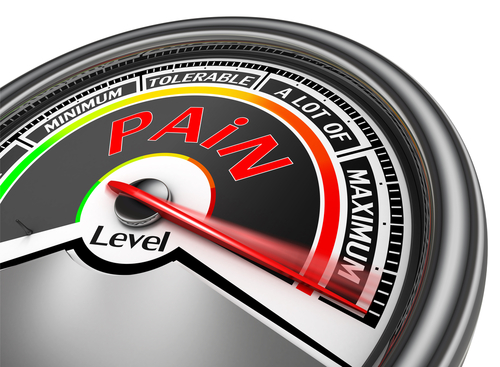A simple bedside chart for assessing and managing pain reduced hospitalized cancer patients’ pain without increasing their use of opioids, a large British study showed.
Its findings suggested that systematic pain assessment and management should be part of cancer care. A breakdown of the types of cancer patients in the study showed that many had ovarian cancer.
The study appeared in the Journal of Clinical Oncology. The title is “Pain Management in Cancer Center Inpatients: A Cluster Randomized Trial to Evaluate a Systematic Integrated Approach—The Edinburgh Pain Assessment and Management Tool.” Cancer Research U.K. supported the work.
Half of cancer patients experience pain, but in many cases their symptoms are poorly managed. Reasons for this include unstructured pain assessment efforts, using faulty treatment guidelines, and failing to monitor patients’ pain adequately.
Medical staff and researchers at Scotland’s University of Edinburgh developed a bedside tool to try to improve cancer patients’ pain management. They based the Edinburgh Pain Assessment and Management Tool on the concept that pain is the fifth vital sign. The traditional vitals are body temperature, blood pressure, heartbeat rate, and breathing rate,
Medical staff using the system regularly measure a patient’s pain levels and record them in a chart. The chart contains guidelines on adjusting a patient’s pain treatment to what is needed.
If scores indicate moderate to severe pain, the chart instructs doctors to review medications and their side effects, and monitor pain more closely.
The researchers tested the chart’s effectiveness at 19 medical centers. They randomly assigned some centers to a combination of usual pain care plus the chart system and others just to usual care.
Their study covered 1,921 patients with different types of cancer. The most common were those of the genital and urinary systems (14.2%), gastro-intestinal system (13.5%), breasts (12%), and lungs (11.5%). Patient were followed from admission to three to five days after admission.
Eight of the 10 centers using the charts reported a significant increase in the percentage of patients reporting less pain. In contrast, only three of the nine centers providing usual care reported patient pain improvement.
In centers using the chart, the percentage of patients reporting that their pain improved increased from 47.7% to 54.1%. In the non-chart centers, the percentage fell from 50.6% to 46.4%.
An important finding was that the chart centers did not prescribe more opioids to patients.
The results “of this trial add to the accumulating evidence for the efficacy of more integrated and systematic approaches to symptom management in patients with cancer,” the researchers wrote.
They said they believe the monitoring strategy both increases pain awareness and encourages doctors to ask the right questions, improving pain medication prescription and reducing side effects. The system has a preventive nature as well, keeping patients from reaching a crisis point, the researchers said.
“These exciting findings show the important benefits of influencing doctors’ behaviors, rather than looking for more complex and expensive interventions,” Professor Marie Fallon of the University of Edinburgh’s Palliative and Supportive Care Group, said in a press release. “These findings are a positive step towards reducing the burden of pain for patients and making them as comfortable as possible at all stages of cancer.”

